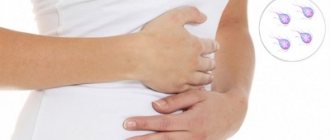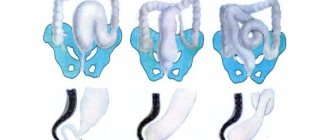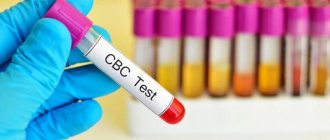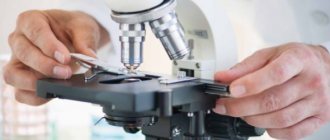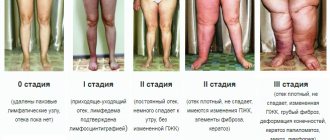Giardiasis
is a disease caused by Giardia - microscopic intestinal parasites belonging to the type of protozoa, the class of flagellates. Giardia are intestinal parasites, the main areas of their vital activity are the duodenum and the beginning of the small intestine. Giardia is carried by many animals, including rats, mice, cats, and dogs. But the main source of giardiasis infection for humans is humans.
Giardia infestation can lead to a functional disorder of the small intestine, although in a significant number of cases a person carrying Giardia may not have any complaints. However, in accordance with WHO recommendations, the diagnosis of giardiasis is established when Giardia is detected in any case, even in the absence of pronounced symptoms.
Giardia is named after Dr. D.F. Giardia, a Czech by birth, who described this intestinal parasite in 1859 and worked in Russia since 1860. However, the history of Giardia in European medicine begins with a description made much later by the French biologist Alfred Giard (the Latin spelling of his last name is Guard). Therefore, in foreign medicine, another name for giardiasis is accepted - giardiasis (pronounced jardiaz or guardiaz).
The prevalence of giardiasis depends on the development of hygienic culture. In European countries, no more than 3-5% of people are affected by Giardia. Among children, giardiasis is detected twice as often as in adults. This is due to the fact that children often do not follow hygiene rules.
Causes of giardiasis
The mechanism of transmission of Giardia is fecal-oral. That is, Giardia is excreted from the body along with feces, and enters through the mouth - along with food or water.
Giardia exists in two forms - vegetative (in which Giardia feeds and grows) and in the form of a cyst (when the body of the microorganism is covered with a protective shell). Outside the human body, vegetative forms die, but cysts remain viable.
For Giardia infection to occur, it is enough for 10 to 100 cysts to enter the body. Giardia cysts can be present in the ground, in water, including running water and even spring water, and carried on the legs of flies. Only cooling below 13°C or boiling kills cysts.
A cyst that enters the human body reaches the duodenum, where it dissolves under the influence of intestinal juice. From one cyst, two vegetative forms of Giardia are formed. Giardia attaches to the villi of the intestinal mucosa and is believed to feed on products of parietal digestion. Giardia reproduces by division. Every 9-12 hours the number of Giardia doubles.
When it enters the colon, Giardia changes shape, turning into a cyst. Cysts leave the body with feces.
Ornidazole in the treatment of intestinal giardiasis
The main active ingredient is ornidazole. Available in tablet form. Recommended treatment regimens with ornidazole:
- Once at night - adults 3 tablets, children over 35 kg - also 3 tablets, children up to 35 kg according to weight from 30 to 40 mg per 1 kg.
- Adults – 1 tablet 3 days at night
Side effects of the drug are similar to similar drugs:
- Dyspeptic phenomena
- Dizziness
- Headache
- Possible liver dysfunction – ALT and AST values change
- Allergic manifestations
- Hematopoiesis disorder
- The drug is not prescribed to pregnant and lactating women.
Symptoms of giardiasis
Giardia can number up to a million per square centimeter of intestinal wall. They mechanically damage blood cells (erythrocytes), cause irritation of nerve endings, and disrupt the absorption process. As a result, inflammation develops. Giardia waste products can cause allergic reactions.
Giardiasis can occur in acute or chronic form. Symptoms of acute giardiasis may appear 1-3 weeks after infection.
Giardiasis most often manifests itself as an intestinal disorder. In some cases, giardiasis can cause disruption of the gallbladder and stagnation of bile. In the case of long-term giardiasis (especially in children), neurotic symptoms may be observed.
Abdominal pain
With giardiasis, there is pain in the epigastric region and in the navel area. The pain is usually dull, but in some cases it can be sharp.
Flatulence
Increased gas formation (flatulence) is usually accompanied by a feeling of fullness in the stomach. Belching and heartburn are possible.
More about the symptom
Stool disorder
Possible diarrhea up to 3-5 times a day; The stool is initially watery or foamy, but may later become greasy. Diarrhea may give way to constipation.
Allergic manifestations
Possible allergic manifestations of giardiasis:
- hives;
- severe itching;
- atopic dermatitis;
- bronchial asthma;
- allergic rhinitis, conjunctivitis, blepharitis and some other manifestations.
Neurotic symptoms
With a long course of giardiasis (especially in children), the following neurotic symptoms may be observed: weakness, fatigue, irritability (tearfulness in young children), headaches, dizziness, cardialgia.
Trichopolum in the treatment of giardiasis
This is a good old drug that was used to treat our mothers and grandmothers. The main active ingredient is metronidazole. Effective dose in the treatment of giardiasis:
- Children under 12 years old - 375 mg 2 times a day - this is 1.5 tablets of 250 mg
- Adults – 0.5 g 2 times a day – 2 tablets of 250 mg
Contraindications to the drug:
- Blood diseases
- Organic damage to the central nervous system
- Individual intolerance
- Pregnancy - according to the doctor's decision
- Alcohol is prohibited during treatment
Side effects:
- Dyspeptic symptoms - nausea and vomiting, constipation or diarrhea
- Headaches, migraines
- Development of depression
- Convulsions
- Occasionally – red-brown urine
Methods for diagnosing giardiasis
Giardiasis has no specific symptoms, and its manifestations are varied. Therefore, a typical situation is when a person is treated by different specialists for different symptoms, but giardiasis remains undetected.
You should definitely get tested for Giardia in the following cases:
- with a tendency to intestinal diseases, as well as with their chronic course;
- with eosinophilia (the presence of an increased number of eosinophils in the blood);
- for allergic manifestations;
- in case of intestinal disorder acquired while traveling abroad, especially to southern and exotic countries;
- in case of neurotic symptoms, especially against the background of intestinal disorders.
Giardiasis is diagnosed based on laboratory tests. To diagnose giardiasis, the following are usually used:
Microscopic examination
The feces are examined for the presence of Giardia cysts, and the intestinal contents are examined for the presence of vegetative forms.
Serological blood test
Using a serological analysis, the presence of antibodies to Giardia in the blood is determined.
More information about the diagnostic method
Stool examination
An immunological test can detect a specific Giardia antigen in the stool.
Sign up for diagnostics To accurately diagnose the disease, make an appointment with specialists from the Family Doctor network.
Giardia in children
“Perhaps the child has parasites?!” Parents may ask this question if their child suffers from allergies, indigestion, or poor appetite.
One of the common parasitic diseases in children is giardiasis.
How does infection with the causative agent of giardiasis, Giardia, occur? What tests should a child undergo for Giardia? How to get rid of these parasites?
These and other questions are answered by Elena Gennadievna Koroleva, a children's infectious disease specialist at Clinic Expert Tula.
— Elena Gennadievna, many parents have probably come across the term “giardia.” What is it and what does Giardia look like?
- These are small protozoan parasites invisible to the naked eye. They are the causative agents of giardiasis. They are an amoeba with a flagellum. Giardia lives in the small intestine of humans and other mammals, as well as birds. They are excreted with feces in the form of cysts.
— Where does Giardia come from in a child’s body?
— There are several ways that Giardia cysts can enter the body:
- Contact – when using common hygiene products, utensils
- Water – when swimming in polluted waters or drinking raw water from questionable sources
- Food – if the child eats unwashed vegetables, fruits, and also consumes foods without sufficient heat treatment (raw milk, meat, fish)
- Associated with animals. Giardia cysts can be carried by domestic animals that are kept or walked outside, as well as agricultural animals.
It is important that the Giardia cyst is very resistant to external influences. For this reason, it is not destroyed by gastric juice. Once in the duodenum, lamblia is released from the membrane and absorbs nutrients here with its entire surface.
— What are the symptoms of Giardia in children?
— In general, it is common for parasitic diseases in general, and Giardia in particular, to hide behind “masks” - signs of other diseases. Acute giardiasis, for example, is characterized by clinical signs of intestinal infection:
- nausea, vomiting,
- stomach ache,
- diarrhea (in the case of giardiasis - in the form of foamy stools).
It is quite difficult to suspect acute giardiasis.
Chronic forms of giardiasis manifest with symptoms similar to irritable bowel syndrome. Most often I hear complaints about periodic disorders of the digestive tract. May be noted:
- bowel dysfunction (constipation, diarrhea),
- pain around the navel,
- nausea, belching,
- loss of appetite,
- signs of biliary dyskinesia (in particular, a white coating on the tongue, sharp pain in the right side during physical activity, episodes of frequent loose stools, a burning sensation in the intestinal area after stress or eating sweets, weight loss),
- allergic manifestations (dermatitis, urticaria, bronchial asthma).
Due to an imbalance in the function of the liver, biliary tract, and pancreas, characteristic oily stools and a specific skin tone on the abdomen with a brown halo around the navel are noted.
If the pathogen enters the body massively, the child’s body temperature may periodically rise to 37 - 37.5 degrees Celsius.
Sometimes giardiasis is asymptomatic, in some cases an extremely severe form of the course is observed (for example, in small children and in HIV-infected people).
— Elena Gennadievna, how to detect lamblia in children? What does the diagnosis of giardiasis consist of?
— Detection of Giardia cysts in stool is used (three times microscopic examination) and stool analysis by PCR (one time). The combination of these methods is the gold standard for diagnosing giardiasis.
Another diagnostic method is ELISA (enzyme-linked immunosorbent assay) of blood for Giardia. It allows you to detect not Giardia themselves, but antibodies to them. Based on the results of this research method alone, a diagnosis is not made. Usually ELISA is done in combination with PCR or stool microscopy, but sometimes when making a diagnosis we rely only on a blood test and on the clinical picture characteristic of giardiasis.
Another method for identifying Giardia is gastroscopy with examination of the contents of the duodenum. Since this procedure is difficult to perform on a child, they are usually limited to the above methods.
Read materials on the topic:
Diagnosis of infections using PCR: what is it? ELISA blood test: when is it used?
— Please tell us how to test for Giardia. Do I need to prepare for it somehow?
— Blood for ELISA must be donated on an empty stomach. For microscopic examination of stool, it is necessary to collect several portions of it; in some laboratories, stool is examined only in warm form.
— How to remove Giardia from a child? What does modern medicine offer?
— Treatment of Giardia in children is a long-term three-stage therapy, which takes 1.5-2 months. The treatment regimen, dose and frequency of drug intake are selected by the doctor individually for each child. At the first – preparatory – stage, the intestinal microflora is restored, sorbents and enzymes are used. Next comes antiprotozoal therapy, and then the recovery stage using immunomodulators.
I would like to emphasize that the identification of parasites, including Giardia, in one of the family members is a direct indication for appropriate therapy for the whole family.
— What preventive measures will help prevent giardiasis in children?
— First of all, it is necessary to teach hygiene skills to children from an early age, in particular, to wash their hands regularly (before eating, after using the toilet, walking, interacting with pets). Do not allow drinking raw water (unfiltered, from the citywide water supply system), or swimming in polluted water bodies. It is important to regularly treat pets against parasites.
Addressing parents, I would also like to say that in case of any suspicious symptoms or sluggish chronic processes in a child, it is imperative to consult a doctor. Timely identification of parasites will help to avoid many related health problems.
Interviewed by Sevilya Ibraimova
You can make an appointment with a pediatrician here
You can sign up for tests here. ATTENTION: services are not available in all cities
The editors recommend: Attention, echinococcosis! Often – how much? A child who is often ill at a pediatrician's appointment
For reference:
Koroleva Elena Gennadievna
Graduate of the pediatric faculty of the Kyrgyz State Medical Institute in 1992. In 1993, she graduated from an internship specializing in “Children’s infections.” She currently holds the position of pediatric infectious disease specialist, pediatric anesthesiologist and resuscitator at Clinic Expert Tula. Receives at the address: st. Boldina, 74.
